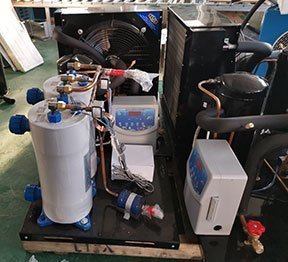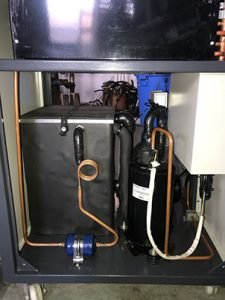How to choose the right type of heat exchanger for your application?It always be a big problem for anybody who don’t understand the theory of heat exchangers.
So, before you make the decision, you should find out this question :
What is a heat exchanger ?
As its name suggests, a heat exchanger is a tool that enables efficient temperature exchange between two materials , which are at different temperatures , within the heat exchanger. One side is called a heat source and the other is called a cold source.
Different types of Heat exchangers:
The exchange of temperature between different substances requires different types of heat exchangers.
On the market , common types of heat exchanger are Shell-and-tube heat exchanger, heat exchanger with tank, immersed heat exchanger, box heat exchanger, plate heat exchanger. Shell-and-tube heat exchanger according to the arrangement of its tubes, can be divided into: coil heat exchanger, tube-in-line heat exchanger.

Different heat exchanger for different Applications / Conditions :
But under what conditions and what types of heat exchangers are suitable What factors should be considered in the selection of heat exchangers Let’s take a look at the scenarios we don’t use.
1. Fish tank refrigeration-titanium coil heat exchanger:
fish are very sensitive to changes in water environment, especially water cleanliness and water temperature. In particular, the use of chillers/thermostats to control water temperature is very necessary for the cultivation of seafood and fish. For the small seafood pool thermostat, we generally choose titanium coil shell-and-tube heat exchanger, or directly use titanium immersion tube heat exchanger. Titanium has a good corrosion resistance, so in the sea water treatment applications are quite outstanding, but also very common, the normal service life of up to 5 years. If the use of copper or stainless steel pipe made of heat exchanger, its life will be greatly reduced. Because its function is mainly used for refrigeration, we often call this kind of titanium heat exchanger titanium evaporator.

2. Industrial refrigeration, temperature control above 5 °c – copper stainless steel box or shell-and-tube heat exchanger.
industrial production, for the maintenance of equipment, life, and process requirements, often need to use the water chiller. Such as laser equipment, laser equipment in the course of operation, laser generator such as diode, will continue to produce high heat. If the equipment overheats for a long time, this will damage the life of the laser generator. Therefore, the laser equipment must be equipped with a corresponding refrigeration capacity of the chiller. In the laser water chiller, generally use small volume of stainless steel coil shell-and-tube heat exchanger or stainless steel heat exchanger tank.
In addition to laser equipment, injection molding machine, extruder and other plastic processing equipment also need to be equipped with temperature controller. The chillers for this type of equipment are generally copper-tube stainless steel tank-type evaporators. Generally speaking, the chillers of this type of equipment need not high refrigerating capacity and the required refrigerating temperature is not low, so they are usually air-cooled chillers with built-in coil box or shell-and-tube evaporator.

3. Marine engine cooling, oil cooling, steam heat recovery applications-coaxial bushing or tubular heat exchangers, plate heat exchangers.
The requirements of these applications for heat exchangers are high, both in terms of heat transfer efficiency and shock resistance. Therefore this kind of chiller generally uses the coaxial sleeve type heat exchanger, the row tube type heat exchanger or the plate type heat exchanger. These two types of heat exchangers have small internal volume, high heat transfer efficiency and strong external structure, and are very suitable for high-power refrigeration equipment. In particular, open, screw-type chillers.
And this kind of chiller is water-cooled chiller generally. After all, air-cooled chillers are difficult to achieve a high heat transfer ratio, and water-cooled heat exchangers in the heat transfer ratio has an absolute advantage. However, water-cooled chillers need to use cold water tower, the cold water tower is huge, so the heat transfer ratio requirements are not so high chiller equipment, the general recommendation is air-cooled chillers.




